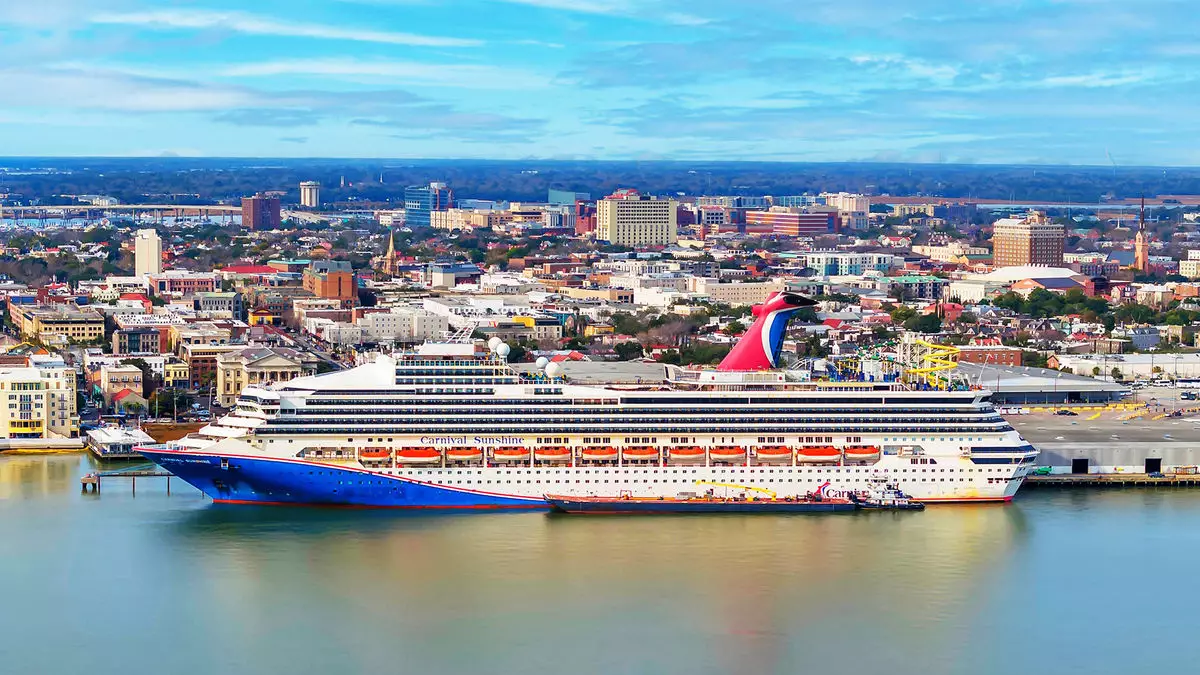In the wake of ongoing geopolitical tensions and economic disruptions stemming from President Donald Trump’s tariffs, the cruise industry faces significant scrutiny. Carnival Corp., the titan of the cruise sector, recently reported its quarterly earnings, and CEO Josh Weinstein found himself at the center of inquiry regarding the implications of these external pressures. Despite the turbulent backdrop, Weinstein projected a sense of optimism regarding the health of Carnival’s business. His assertion that the company is faring “well, if not thriving” suggests an underlying resilience amid stormy waters, reflecting a juxtaposition between broad market concerns and the company’s performance metrics.
Weinstein emphasized a 10% year-over-year increase in onboard spending during the first quarter of this year, a clear indicator of robust consumer engagement. This growth, coupled with a record-breaking Wave season, suggests that consumer appetite for cruising remains strong, defying broader economic apprehensions. The cruise giant set a new benchmark in future bookings, noting unprecedented volumes for 2026 and beyond. Such figures illustrate that Carnival is capitalizing on a market eager to sail, irrespective of potential headwinds from the economy at large.
Understanding Consumer Behavior and Market Dynamics
A pivotal aspect contributing to Carnival’s resilience is the comparative pricing advantage of cruises over traditional land vacations. Weinstein candidly remarked that although the existing price discrepancies can be “frustrating,” they fortify Carnival’s position in the leisure travel sector. The attractive pricing of cruise experiences in relation to land options not only draws in seasoned cruisers but also attracts a burgeoning demographic of new travelers. This phenomenon suggests that when economic uncertainty looms, consumers might gravitate toward alternatives perceived as offering greater value, positioning the cruise line advantageously.
However, it is crucial not to gloss over the nuanced responses from travel advisors who paint a more complex picture. According to a survey by Cleveland Research Co., while a robust portion of bookings were better than expected early in the season, a noticeable slowdown in demand materialized as geopolitical uncertainties escalated. This slowdown—a stark shift from 53% to just 27% of agents reporting strong bookings—underscores a fickle consumer sentiment that is easily swayed by current events.
Despite these fluctuations, the consensus within the industry suggests a relatively stable short-term outlook for cruise bookings, primarily due to favorable early-year booking patterns. The resilience observed in Carnival’s performance hints at an adaptable business model capable of weathering immediate volatility.
The Diverging Paths of Luxury and Mainstream Brands
Within the cruise landscape, divisions manifest not just in market share but also in the client demographics being targeted. While Carnival and similar mainstream brands navigate uncertain waters, luxury cruise providers appear to be basking in sunshine. Figures from KHM Travel Group reveal a double-digit increase in luxury cruise bookings, showcasing a distinct divergence in consumer confidence based on brand positioning. High-net-worth individuals, seemingly less affected by economic fluctuations, continue to invest in travel experiences, thereby granting luxury lines an advantage.
In stark contrast, some travel advisors have expressed growing concern over the long-term implications of fiscal policies and government actions on the industry. For professionals such as Jean Paul Carufo of NetCruise Travel, the ramifications of workforce reductions and an uncertain economy loom large, even if immediate cancellations have yet to materialize. The decline in future inquiries paints a cautious picture as travelers research international perceptions of Americans, highlighting concerns that transcend mere fiscal matters.
Moreover, companies like Cruisebound reveal a different narrative altogether. Despite initial highs and lows in bookings, March has proven to be a game-changer, with record booking figures emanating from a digital-first approach appealing to a tech-savvy demographic. This juxtaposition among various segments of the cruise industry illustrates just how varying consumer behaviors and market dynamics can influence outcomes.
Navigating Forward: Carnival Corp. and the Industry’s Future
In summation, while Carnival Corp. presently commands attention with its positive earnings trajectory, it remains encumbered by external uncertainties that have the potential to alter the market landscape. The cruise industry’s gradual recovery from past challenges is testament to its inherent resilience but also exposes the vulnerabilities influenced by global affairs. As economic tides continue to shift, the ability of cruise lines to navigate through choppy waters will depend on maintaining consumer trust, responding adeptly to market changes, and leveraging unique pricing strategies. The path ahead promises to be anything but smooth, but Carnival Corp. exemplifies a model for resilience that could very well dictate the industry’s navigation in unforeseen waters.


Leave a Reply